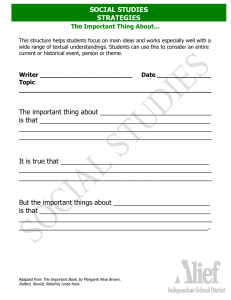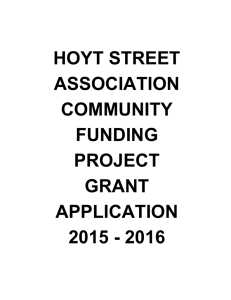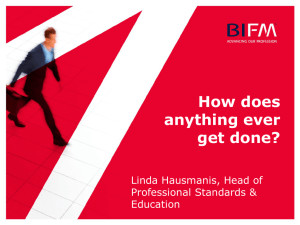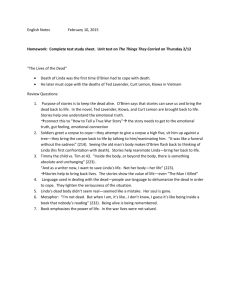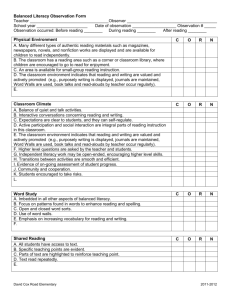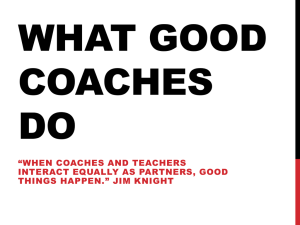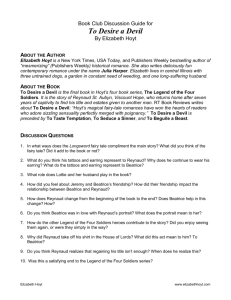Small Group Strategy Instruction
advertisement
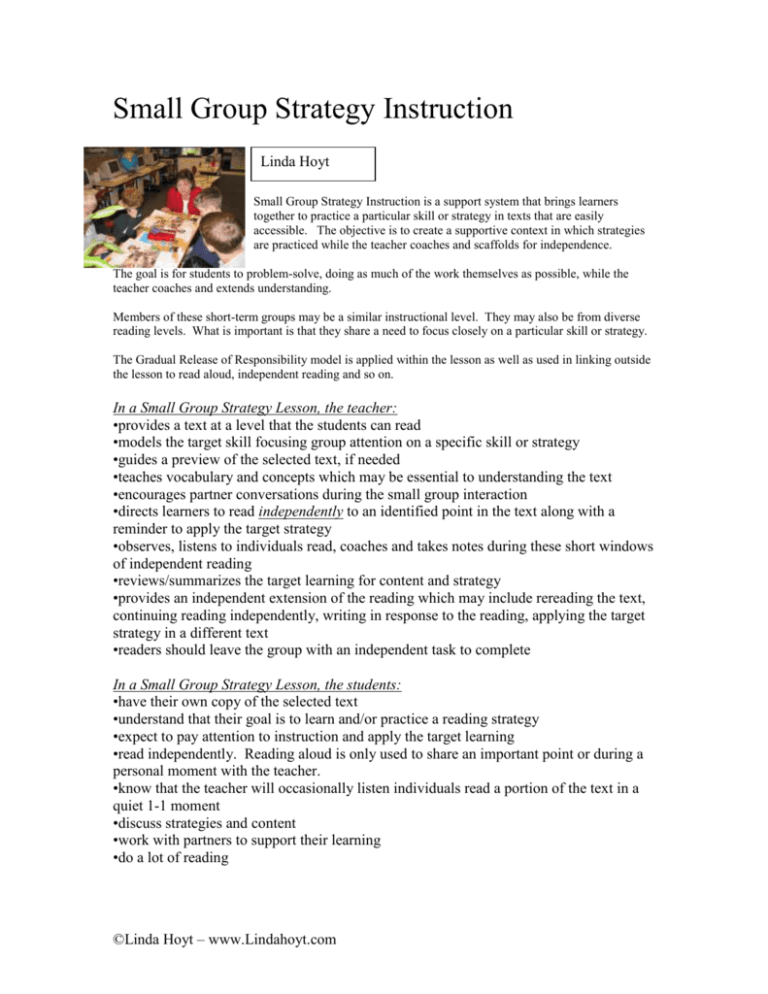
Small Group Strategy Instruction Linda Hoyt Small Group Strategy Instruction is a support system that brings learners together to practice a particular skill or strategy in texts that are easily accessible. The objective is to create a supportive context in which strategies are practiced while the teacher coaches and scaffolds for independence. The goal is for students to problem-solve, doing as much of the work themselves as possible, while the teacher coaches and extends understanding. Members of these short-term groups may be a similar instructional level. They may also be from diverse reading levels. What is important is that they share a need to focus closely on a particular skill or strategy. The Gradual Release of Responsibility model is applied within the lesson as well as used in linking outside the lesson to read aloud, independent reading and so on. In a Small Group Strategy Lesson, the teacher: •provides a text at a level that the students can read •models the target skill focusing group attention on a specific skill or strategy •guides a preview of the selected text, if needed •teaches vocabulary and concepts which may be essential to understanding the text •encourages partner conversations during the small group interaction •directs learners to read independently to an identified point in the text along with a reminder to apply the target strategy •observes, listens to individuals read, coaches and takes notes during these short windows of independent reading •reviews/summarizes the target learning for content and strategy •provides an independent extension of the reading which may include rereading the text, continuing reading independently, writing in response to the reading, applying the target strategy in a different text •readers should leave the group with an independent task to complete In a Small Group Strategy Lesson, the students: •have their own copy of the selected text •understand that their goal is to learn and/or practice a reading strategy •expect to pay attention to instruction and apply the target learning •read independently. Reading aloud is only used to share an important point or during a personal moment with the teacher. •know that the teacher will occasionally listen individuals read a portion of the text in a quiet 1-1 moment •discuss strategies and content •work with partners to support their learning •do a lot of reading ©Linda Hoyt – www.Lindahoyt.com The Architecture of a Small Group Lesson Target Time Frame: approximately 15 minutes Linda Hoyt Teach a small, learnable amount. Practice it in real contexts. Talk about what you learned and how it worked. Gradual release of responsibility is about narrowing the field of vision so that you can truly see a fine point. Study it. Model it carefully. Then, provide extensive opportunities for learners to apply the learning in a wide variety of contexts. Linda Hoyt Preview the Text: Make Connections, Frontload Concepts and Vocabulary •Lay foundations for understanding with a preview of the text, consideration of vocabulary the students will expect to find, preteaching of core content and vocabulary, as needed. •Provide a mix of teacher talk and partner conversations to activate prior knowledge and topic related vocabulary. Focus on the Strategy •For a new strategy/skill: Introduce the target understanding so students can see it in action through modeling and think aloud •For a previously taught strategy: Remind the students of the strategy/skill and ways in which it can help them grow as readers. Demonstrate it again if students are not absolutely clear about how the strategy works. Launch the Reading •Set a target stopping point then have the students begin to read independently with the understanding that they are to stop at the identified point and prepare to talk about the strategy they used and the content they learned. Remind early finishers to use the time to prepare comments for a partner. •While students read, move in close to individuals and ask them to read a bit while you observe their strategies, take a running record and, if needed, provide coaching. Midstream Comprehension Check •Guide a brief midstream conversation about the strategy students are working on and the content they are learning. A one-minute partner chat before group sharing begins ensures that all students will engage in conversation. •Be prepared to reteach the strategy, if necessary Read On •Repeat the process of setting a stop point, independent reading, guided conversation Wrap Up: Build Fluency and Transfer of the Strategy •Summarize or recap the target strategy and content. Focus on ways students can help themselves to remember to use the strategy or skill over time. •Assign an extension of the learning… continued reading in the same text, rereading the text for fluency, writing about the strategy or the content, applying the strategy in another text and so on. Optional: Word Work Consider targeted word work with tiles, Making Words, white boards and so on. This may be conducted within the small group time or as an extension. ©Linda Hoyt – www.Lindahoyt.com
